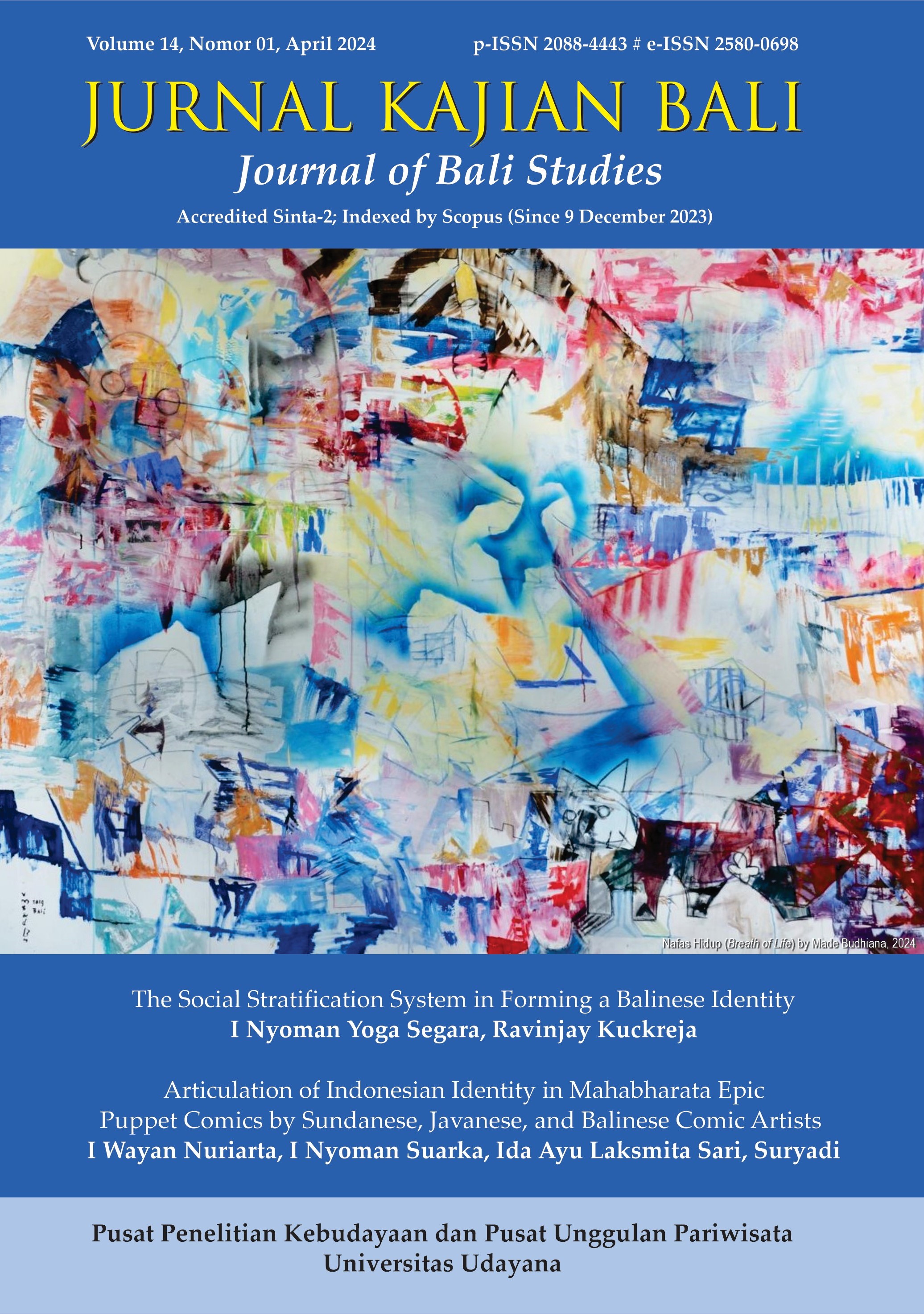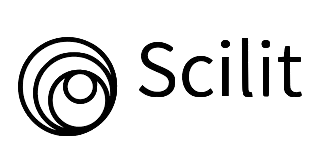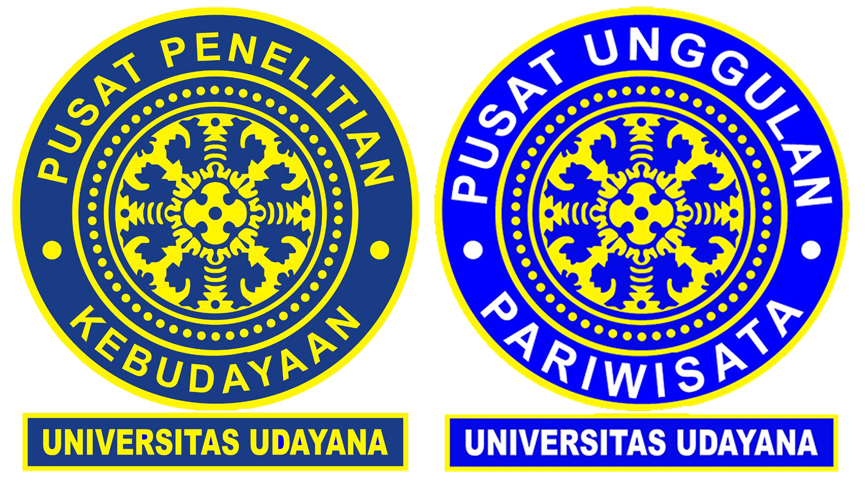Farmer Perspectives on Sustainable Urban Farming Tourism: A Case Study of Bali's Subak Lestari Program
Abstract
Bali's economic landscape, intricately interwoven with tourism, integrates cultural-urban agriculture via the Subak system. Subak is an organization owned by the farmers in Bali that specifically regulates water management. The government has selected several Subak in urban area to become dynamic agricultural centers named Subak Lestari. The research explores farmer perspectives on urban agriculture tourism and offering insights for future sustainable urban agriculture and cultural tourism. This qualitative study is involving 23 farmers of Subak Lestari management and reflecting scores in technical (4.01), socio-cultural (3.87), economic (4.29), and environmental (4.32) aspects. These assessments underscore confidence in Subak Lestari's potential to catalyze a development in tourism-centric urban agriculture. Farmers seriously support positions of Subak Lestari as a potent force in reshaping urban agriculture. The study advocates for stakeholders to foster a sustainable fusion of traditional agriculture and tourism to safeguard agricultural spaces and ensuring urban farmers existence.
Downloads
References
Anggela, M.M., Karini, N.M.O., Wijaya, N.M.S. (2017). Persepsi Dan Motivasi Wisatawan Yang Berkunjung Ke Daya Tarik Wisata Jembong Di Kabupaten Buleleng. Jurnal IPTA Vol. 5 No. 2. 76 – 91.
Antara, M., Wijaya, G. N. K., & Windia, W. (2017). Ekowisata Subak, Jatiluwih, Tabanan, Bali. Pelawa Sari.
Arida, I.N.S. (2017). Pariwisata Berkelanjutan. Bali: Sustain Press.
Bhayunagiri, I. B. P., & Saifulloh, M. (2022). Mapping Of Subak Area Boundaries And Soil Fertility For Agricultural Land Conservation. Geographia Technica, 17(2). https://doi.org/10.21163/GT_2022.172.17
Budiasa, I. W., Setiawan, B. I., Kato, H., Sekino, N., & Kubota, J. (2015). The role of the Subak system and tourism on land use changes within the Saba watershed, Northern Bali, Indonesia. Journal of the International Society for Southeast Asian Agricultural Sciences, 21(2).
Castonguay, A. C., Burkhard, B., Müller, F., Horgan, F. G., & Settele, J. (2016). Resilience and adaptability of rice terrace social-ecological systems: A case study of a local community’s perception in Banaue, Philippines. Ecology and Society, 21(2). https://doi.org/10.5751/ES-08348-210215
Darmawan, D. P., Arisena, G. M. K., Utami, N. W. F., & Krisnandika, A. A. K. (2021). The Dynamics of the Social Network of Urban Farmers in Subak Sembung Denpasar. Agris On-Line Papers in Economics and Informatics, 13(2). https://doi.org/10.7160/aol.2021.130204
Diarta, I. K. S., & Sarjana, I. M. (2018). Strategi Pengembangan Subak Padanggalak sebagai Daya Tarik Wisata di Kota Denpasar Bali. Media Konservasi, 23 (3).
Dimastari, N. N., & Ariawan, P. (2023). Peningkatan Ekonomi Masyarakat melalui Pengelolaan Subak Kredung yang Lebih Kompetitif. Jurnal PkM (Pengabdian Kepada Masyarakat), 6(3). https://doi.org/10.30998/jurnalpkm.v6i3.9240
Djelantik, A. A. A. W. S., Mahendra, I. M. S., Windia, I. W., & Sudarma, I. M. (2023). The Impact of Rice Field Functional Shifts on Sustainability and Greenhouse Gas Emissions in Tabanan Regency, Bali, Indonesia. International Journal of Design and Nature and Ecodynamics, 18(3). https://doi.org/10.18280/ijdne.180321
Ducusin, R. J. C., Espaldon, M. V. O., Rebancos, C. M., & De Guzman, L. E. P. (2019). Vulnerability assessment of climate change impacts on a Globally Important Agricultural Heritage System (GIAHS) in the Philippines: the case of Batad Rice Terraces, Banaue, Ifugao, Philippines. Climatic Change. https://doi.org/10.1007/s10584-019-02397-7
Gao, X., Jiao, Y. M., Liu, C. J., Zha, Z. Q., & Li, R. (2019). Traditional subak irrigation system and its eco-hydrological effects in bali rice terraces, Indonesia. Chinese Journal of Ecology, 38(3). https://doi.org/10.13292/j.1000-4890.201903.032
Hariyono, S.S., & Wening, N. (2022). Certification Of Cleanliness, Health, Safety And Environmental Sustainability As Research And Development Opportunities In Various Fields Of Business Services: A Literature Review. International Journal of Innovative Technologies in Social Science, 2(34). https://doi.org/10.31435/rsglobal_ijitss/30062022/7812
Hutauruk, J., Lanya, I., & Nuarsa, I. (2016). Sistem Informasi Lahan Subak Berbasis Penginderaan Jauh Dan Sistem Informasi Geografi di Kota Denpasar. E-Jurnal Agroekoteknologi Tropika (Journal of Tropical Agroecotechnology), 5(3).
Islam, A. M., & Aldaihani, F. M. (2022). Justification for Adopting Qualitative Research Method, Research. Journal of International Business and Management, 5(1).
Junaedi, I.W.R, Feoh, G., Putra, P.S.E, Hidajat, B. (2023). Increasing Knowledge of Entrepreneurship, Marketing, and CHSE as The Development of Pingetourism Village Marga District, Tabanan, Regency, Bali. International Journal of Social Science, 2(4). https://doi.org/10.53625/ijss.v2i4.4648
Krismawintari, N. D., & Utama, I. R. (2019). Kajian tentang Penerapan Community Based Tourism di Daya Tarik Wisata Jatiluwih, Tabanan, Bali. Jurnal Kajian Bali (Journal of Bali Studies), 9(2), 429–448. https://doi.org/10.24843/JKB.2019.v09.i02.p08
Lanya, I., Dibia, I. N., Diara, I. W., & Suarjaya, D. G. (2017). Analysis of Subak Landuse Change Due to Tourism Accomodation Development in North Kuta Sub-district, Badung Regency, Indonesia. IOP Conference Series: Earth and Environmental Science, 98(1). https://doi.org/10.1088/1755-1315/98/1/012024
Lanya, I., Subadiyasa, N. N., & Ratna Adi, G. P. (2018). Impact of spatial plan on the conversion of Subak rice fields and food security, in Badung and Gianyar Regencies, Bali Province. IOP Conference Series: Earth and Environmental Science, 149(1). https://doi.org/10.1088/1755-1315/149/1/012003
Lanya, I., Subadiyasa, N. N., Sardiana, K., & Adi, G. P. R. (2015). Numerical Classification, Subak Zoning and Land Transfer Function Rice Field in the Province of Bali Based on Remote Sensing and GIS. Procedia Environmental Sciences, 24. https://doi.org/10.1016/j.proenv.2015.03.008
Linda, A. M., Ambarawati, I., Nyoman, I., & Ustriyana, G. (2018). Sustainability Status of Rice Farming in Denpasar City (Case Study of Subak Intaran Barat, Sanur Kauh Village, South Denpasar District). Jurnal Manajemen Agribisnis, 6(1).
Matta, C. (2022). Philosophical Paradigms in Qualitative Research Methods Education: What is their Pedagogical Role? Scandinavian Journal of Educational Research, 66 (6). https://doi.org/10.1080/00313831.2021.1958372
Murianto. (2014). Potensi dan Persepsi Masyarakat serta Wisatawan Terhadap Pengembangan Ekowisata di Desa Aik Berik, Lombok Tengah. Jurnal Master Pariwisata, Vol. 1, No 1, pp. 43-64.
Norken, I. N. (2019). Efforts to preserve the sustainability of subak irrigation system in Denpasar city, Bali Province, Indonesia. MATEC Web of Conferences, 276. https://doi.org/10.1051/matecconf/201927604002
Norken, I. N., Suputra, I. K., & Arsana, I. G. N. K. (2015). Water Resources Management of Subak Irrigation System in Bali. Applied Mechanics and Materials, 776. https://doi.org/10.4028/www.scientific.net/amm.776.139
Paulus, T. M. (2023). Using Qualitative Data Analysis Software to Support Digital Research Workflows. Human Resource Development Review, 22(1). https://doi.org/10.1177/15344843221138381
Peraturan Menteri Pariwisata Dan Ekonomi Kreatif. 2021. Tentang Pedoman Destinasi Pariwisata Berkelanjutan, Nomor 9 Tahun 2021
Pitana, I. G. (1993). Subak, Sistem Irigasi Tradisional di Bali: Sebuah Canangsari. Denpasar: Upada Sastra.
Pitana, I. G., Gayatri, P. G. (2005). Sosiologi Pariwisata. Yogyakarta: Penerbit Andi.
Prastyadewia, M. I., Susilowati, I., & Iskandara, D. D. (2020). Preserving the existence of subak in bali: The role of social, cultural, and economic agencies. Economia Agro-Alimentare, 22(3). https://doi.org/10.3280/ecag3-2020oa11045
Putra, I.N.D., dkk. (2015). Pariwisata Berbasis Masyarakat Model Bali. Denpasar: Program Studi Magister Kajian Pariwisata Universitas Udayana bekerja sama dengan Buku Arti.
Putri, I. A. K., Wiranatha, A. S., & Suryawardani, I. G. A. O. (2021). Evaluation of CHSE-Based Homestay Business Management in Ubud Tourism Area. E-Journal of Tourism. https://doi.org/10.24922/eot.v8i2.78277
Risna, R. A., Rustini, H. A., Herry, Buchori, D., & Pribadi, D. O. (2022). Subak, a Nature-based Solutions Evidence from Indonesia. IOP Conference Series: Earth and Environmental Science, 959(1). https://doi.org/10.1088/1755-1315/959/1/012030
Santosa, I. G. N. (2022). Strengthening the Supporting Factors of Jatiluwih Subak for its Sustainability as World Cultural Heritage Bali, Indonesia. International Journal for Multidisciplinary Research, 04(03). https://doi.org/10.36948/ijfmr.2022.v04i03.002
Sardiana, I. K., Wiguna, P.P.K. (2023). Evaluating spatial data infrastructure for Subak management in Tabanan Regency, Bali, Indonesia. International Journal of Design & Nature and Ecodynamics, Vol. 18, No. 5, pp. 1033-1043. https://doi.org/10.18280/ijdne.180503
Sarita, A. F., Windia, I. W., & Sudarita, I. W. (2013). Persepsi Petani Subak Pulagan terhadap Penetapan Subak sebagai Warisan Budaya Dunia (Studi Kasus Subak Pulagan Kawasan Kecamatan Tampaksiring Kabupaten Gianyar). Jurnal Agribisnis Dan Agrowisata, 2(4). 214-223
Sedana, G., & Rahmat, A. (2020). Alternative policies to strengthen the traditional irrigation system for supporting the food security program: Case of the subaks’ system in Bali, Indonesia. International Journal of Advanced Science and Technology, 29(7 Special Issue).
Sriartha, I. P., & Giyarsih, S. R. (2015). Spatial zonation model of local irrigation system sustainability (A case of subak system in Bali). Indonesian Journal of Geography, 47(2). https://doi.org/10.22146/ijg.9253
Sriartha, I., & Windia, W. (2015). Efektivitas Implementasi Kebijakan Pemerintah Daerah dalam Mengendalikan Alih Fungsi Lahan Sawah Subak: Studi Kasus di Kabupaten Badung, Bali. Jurnal Kajian Bali (Journal of Bali Studies), 5 (2). 327-346.
Sukanteri, N., Ayu Diah Yuniti, I., Suryana, I., & Verrawati, Y. (2021). Peran Subak dalam Memanajemen Perilaku Petani untuk Mewujudkan Pertanian Berkelanjutan di Bali. Jurnal Kajian Bali (Journal of Bali Studies), 11(2), 407-426. https://doi.org/10.24843/JKB.2021.v11.i02.p09
Sunarta, I. N., & Saifulloh, M. (2022a). Coastal Tourism: Impact For Built-Up Area Growth and Correlation To Vegetation And Water Indices Derived From Sentinel-2 Remote Sensing Imagery. Geojournal of Tourism and Geosites, 41(2). https://doi.org/10.30892/gtg.41223-857
Sunarta, I. N., & Saifulloh, M. (2022b). Spatial Variation of NO2 Levels During The Covid-19 Pandemic In The Bali Tourism Area. Geographia Technica, 17(1). https://doi.org/10.21163/GT_2022.171.11
Sunarta, I. N., Nugroho, S., & Adikampana, I. M. (2021). Spatial Transformation of Subak in Northern Kuta Tourism Area, Bali: From Agricultural to Cultural-Service. South Asian Journal of Social Studies and Economics. https://doi.org/10.9734/sajsse/2021/v9i130229
Sunarta, I. N., Suyarto, R., Saifulloh, M., Wiyanti, W., Susila, K. D., & Kusumadewi, L. G. L. (2022). Surface Urban Heat Island (SUHI) Phenomenon in Bali And Lombok Tourism Areas Based On Remote Sensing. Journal of Southwest Jiaotong University, 57(4). https://doi.org/10.35741/issn.0258-2724.57.4.44
Suryawan, N., Wiryawan, I. W., Gata, I. W., & Kandia, I. W. (2023). Subak Bentuk Kearifan Lokal Bali Berbasis Tri Hita Karana dan Tantangannya pada Era Globalisasi. Sphatika: Jurnal Teologi, 14(1). https://doi.org/10.25078/sphatika.v14i1.2566
Suyarto, R., Wiyanti, Saifulloh, M., Fatahillah, A.W., Diara, I.W., Susila, K.D., Kusmiyarti, T.B. (2023). Hydrological approach for flood overflow estimation in Buleleng Watershed, Bali. International Journal of Safety and Security Engineering, Vol. 13, No. 5, pp. 883-891. https://doi.org/10.18280/ijsse.130512
Tikkanen, A. (2023). Banaue rice terraces: historical rice-terrace system, Luzon, Philippines. June 8, 2023.
Trigunasih, N. M., & Saifulloh, M. (2022a). Correlation Between Soil Nitrogen Content and NDVI Derived from Sentinel-2A Satellite Imagery. Jurnal Lahan Suboptimal: Journal of Suboptimal Lands, 11(2). https://doi.org/10.36706/jlso.11.2.2022.574
Trigunasih, N. M., & Saifulloh, M. (2022b). The Investigating Water Infiltration Conditions Caused by Annual Urban Flooding Using Integrated Remote Sensing and Geographic Information Systems. Journal of Environmental Management and Tourism, 13(5). https://doi.org/10.14505/jemt.v13.5(61).22
Trigunasih, N.M., Narka, I.W., Saifulloh, M. (2023). Measurement of soil chemical properties for mapping soil fertility status. International Journal of Design & Nature and Ecodynamics, Vol. 18, No. 6, pp. 1381-1390. https://doi.org/10.18280/ijdne.180611
Ustriyana, I. N. G., Budiasa, W., Widhianthini, W., & Punia, I. N. (2021). The Sustainability Prospective of Irrigation System Management in Bali and Outside of Bali. SOCA: Jurnal Sosial, Ekonomi Pertanian, 15(3). https://doi.org/10.24843/soca.2021.v15.i03.p18
Wijayanti, P. U., Windia, W., Darmawan, D. P., & Widhianthini, W. (2020). Sustainable development model of subak in Denpasar City. International Journal of Life Sciences, 4(1). https://doi.org/10.29332/ijls.v4n1.418
Windia, W. (2018). Kebertahanan Subak di Era Globalisasi. Jurnal Bali Membangun Bali, 1(2). https://doi.org/10.51172/jbmb.v1i2.27

This work is licensed under a Creative Commons Attribution 4.0 International License.



















